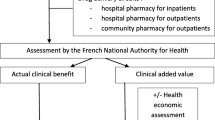Auszug
Seltene Leiden, deren Anzahl man weltweit auf 5.000 bis 8.000 schätzt, zählten bis vor wenigen Jahren zu den von der Öffentlichkeit, der Medizin, der Politik und der Pharmaindustrie kaum beachteten Krankheiten. Wer — außer den Angehörigen der Betroffenen und einigen Experten — kennt schon Leiden wie das Katzenschrei-Syndrom, das Gerstmann-Sträussler-Scheinker-Syndrom oder das Lesch-Nyhan-Syndrom? Oftmals wissen nicht einmal Allgemeinärzte, worum es sich bei diesen Krankheiten handelt, obwohl laut einer vom Europäischen Parlament in Auftrag gegebenen Studie in der EU zwischen 25 und 30 Millionen Bürger von einem seltenen Leiden betroffen sind.23 Davon warten und hoffen viele auf die Entwicklung eines auf ihre Krankheit zugeschnittenen Arzneimittels. Bis Dezember 2007 erhielten 499 Wirkstoffe den Orphan-Drug-Status, von denen 50 als Orphan Drugs zugelassen wurden. Mit diesen Medikamenten können etwa 2,5 Millionen Patienten in der EU behandelt werden. Dennoch sind für eine große Anzahl von Patienten, die an seltenen Krankheiten leiden, die Aussichten bisher eher schlecht, dass sie für ihre spezielle Erkrankung eine wirksame Therapie erhalten.
Access this chapter
Tax calculation will be finalised at checkout
Purchases are for personal use only
Preview
Unable to display preview. Download preview PDF.
Similar content being viewed by others
Literatur
Vgl. European Parliament (1999).
Elbers, R. (2004), S. 2.
Vgl. Amtsblatt der Europäischen Gemeinschaft (2000a), S. 1711.
Vgl. European Federation of Pharmaceutical Industries and Associations (2007), S. 20.
Vgl. European Federation of Pharmaceutical Industries and Associations (2003), S. 14.
Vgl. Bundesverband der Pharmazeutischen Industrie (2003), S. 25.
Vgl. Amtsblatt der Europäischen Gemeinschaft (2000a), S. 18/1.
Vgl. Amtsblatt der Europäischen Gemeinschaft (2000a), S. 18/2.
Vgl. European Agency for the Evaluation of Medicinal Products (2007b).
Vgl. Amtsblatt der Europäischen Gemeinschaft (2000a), S. 18/1–5.
Vgl. Amtsblatt der Europäischen Gemeinschaft (2000b), S. 178/2.
Vgl. Amtsblatt der Europäischen Gemeinschaft (2000a), S. 18/3.
Vgl. Jilma, B., (2004).
Vgl. European Agency for the Evaluation of Medicinal Products (2000a), S. 3–4.
Vgl. Europäische Kommission, DG Enterprise, Pharmacos (2007).
Quelle: eigene Darstellung, basierend auf COMP (2007), S. 4.
Quelle: eigene Darstellung, basierend auf Europäische Kommission, DG Enterprise, Pharmacos (2007).
Vgl. European Agency for the Evaluation of Medicinal Products (2000–2007).
Vgl. European Agency for the Evaluation of Medicinal Products (2003b), S. 63.
Quelle: eigene Darstellung, basierend auf Bundesverband der pharmazeutischen Industrie (2007), S. 24.
Vgl. Walluf-Blume, D. (2002), S. 75.
Vgl. Maeder, T. (2003), S. 75.
Vgl. Maywald, C. (2007).
Vgl. Smit, C. u. a. (1998), S. 79–80.
Vgl. Kettler, H. u. a. (2002), S. 24.
Quelle: eigene Darstellung, basierend auf European Agency for the Evaluation of Medicinal Products (2001–2007).
Vgl. Europäische Kommission, Public Health (2007), S. 1.
Author information
Authors and Affiliations
Editor information
Editors and Affiliations
Rights and permissions
Copyright information
© 2008 Springer-Verlag Berlin Heidelberg
About this chapter
Cite this chapter
Hagn, D., Schöffski, O. (2008). Orphan Drugs. In: Schöffski, O., Fricke, FU., Guminski, W. (eds) Pharmabetriebslehre. Springer, Berlin, Heidelberg. https://doi.org/10.1007/978-3-540-79551-3_25
Download citation
DOI: https://doi.org/10.1007/978-3-540-79551-3_25
Publisher Name: Springer, Berlin, Heidelberg
Print ISBN: 978-3-540-79550-6
Online ISBN: 978-3-540-79551-3
eBook Packages: Business and Economics (German Language)




